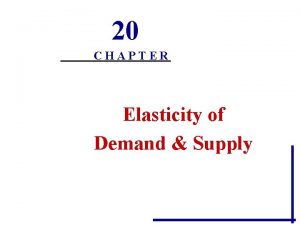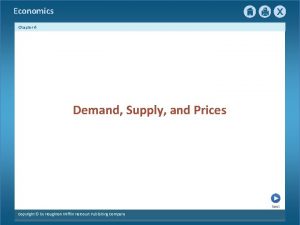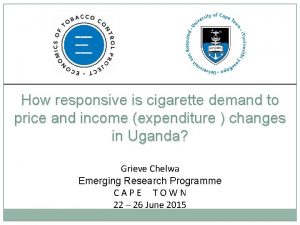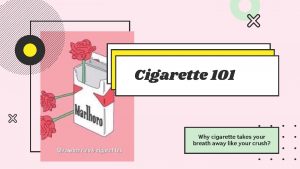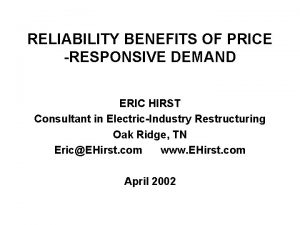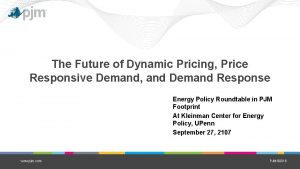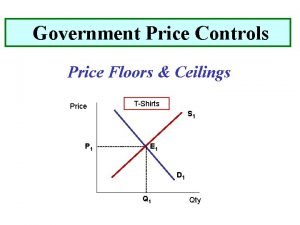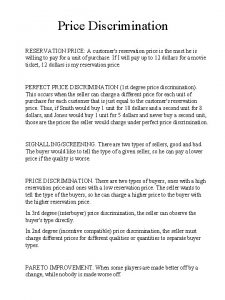How responsive is cigarette demand to price and




















- Slides: 20

How responsive is cigarette demand to price and income (expenditure ) changes in Uganda? Grieve Chelwa Emerging Research Programme CAPE TOWN 22 – 26 June 2015

Introduction & motivation • Uganda’s smoking prevalence relatively high for SSA – – 17% male (vs 14% for SSA) 2% female (vs 3% for SSA) 19% young males (vs 9% SSA) 11% for young females (vs 3% for SSA) • GDP growth has averaged 7% per year – People getting better-off • Inflation at 10% over same period – Cigarettes getting cheaper in real terms Price and income elasticities 22– 26 June 2015

Introduction & motivation • Increase in the incidences of heart disease, chronic obstructive pulmonary disease, strokes and cancer (WHO, 2012) • We know that tax & price measures are single-most effective tool (Chaloupka & Warner, 2000; IARC, 2011) – Excise tax burden very low in Uganda • But still policymakers demand local evidence – Few studies on demand elasticities for SSA outside South Africa – Small but growing literature using expenditure surveys • Nothing yet for Africa Price and income elasticities 22– 26 June 2015

Preview of results • I find estimates of the price elasticity & income elasticity of demand in-line with international evidence – Price elasticity: -0. 30 to -0. 40 – Income elasticity: ~ 0. 10 Price and income elasticities 22– 26 June 2015

Literature review • 2 approaches to estimating price & income elasticities of demand for cigarettes – Time series – Cross sectional data • Time series studies – Reviewed in Chaloupka & Warner (2000); IARC (2011); Guindon et al. (2015) – Price elasticity: -0. 2 to -0. 6 – Income elasticity: 0 to 0. 6 Price and income elasticities 22– 26 June 2015

Literature review • Cross sectional studies – Shortcomings with time series analyses – Most African countries rarely keep time series records • New literature uses expenditure data & method by Deaton (AER, 1988) – John (2005); John (2008); Eozenou & Fishburn (2009); Guindon et al. (2011); Chen & Xing (2011) – Price elasticity: -0. 10 to -0. 60 – Income/expenditure elasticities: 0 to 2 Price and income elasticities 22– 26 June 2015

Data • I use the 2005, 2009 editions of the Uganda National Panel Survey – Nationally Representative – Conducted by UBOS – Sample of ~ 3, 000 households • I also run specifications where I pool the two samples Price and income elasticities 22– 26 June 2015

Method Motivating assumption: cigarette prices vary across geographical space in Uganda Price and income elasticities 22– 26 June 2015

Method • Price and income elasticities 22– 26 June 2015

Method • Unit values are however not “prices” – Measurement error – Quality effects • We can check for quality effects by running: Price and income elasticities 22– 26 June 2015

Quality effects Price and income elasticities 22– 26 June 2015

Method • Standard demand equation: Price and income elasticities 22– 26 June 2015

Demand equation Price and income elasticities 22– 26 June 2015

Method • Now work at cluster level: • Cluster-level regression: Price and income elasticities 22– 26 June 2015

Elasticity formulae • Price elasticity of demand: • Expenditure/income elasticity: Price and income elasticities 22– 26 June 2015

Price elasticities Price and income elasticities 22– 26 June 2015

Expenditure elasticities Price and income elasticities 22– 26 June 2015

Robustness: Price elasticities Price and income elasticities 22– 26 June 2015

Robustness: income elasticities Price and income elasticities 22– 26 June 2015

Conclusion • Cigarettes in Uganda are price inelastic – Demand likely to decline by 3% to 4% for every 10% increase in prices – Within estimates from elsewhere • Cigarettes are likely normal goods in Uganda • Government can decrease consumption of cigarettes without sacrificing tax revenues Price and income elasticities 22– 26 June 2015
 Ano ang price ceiling price floor at price freeze
Ano ang price ceiling price floor at price freeze Price elasticity of demand
Price elasticity of demand Demand responsive transport
Demand responsive transport Lulu sees a professional once a month
Lulu sees a professional once a month Camel cigarettes subliminal advertising
Camel cigarettes subliminal advertising Persepolis the cigarette
Persepolis the cigarette Lppen
Lppen Cigarette radiation sievert
Cigarette radiation sievert Alanis morissette an old man turned 98
Alanis morissette an old man turned 98 Cigarette warning label
Cigarette warning label Cigarette 365 ats
Cigarette 365 ats Global market prespective
Global market prespective Carcinogens in cigarette smoke
Carcinogens in cigarette smoke Daily cigarette consumption
Daily cigarette consumption Carcinogens in cigarette smoke
Carcinogens in cigarette smoke Module 5 supply and demand introduction and demand
Module 5 supply and demand introduction and demand Price discovery and price determination
Price discovery and price determination Chapter 6 section 1 price supply and demand together
Chapter 6 section 1 price supply and demand together Measures to correct excess demand and deficient demand
Measures to correct excess demand and deficient demand Dependent and independent demand
Dependent and independent demand Halimbawa ng demand schedule tagalog
Halimbawa ng demand schedule tagalog

